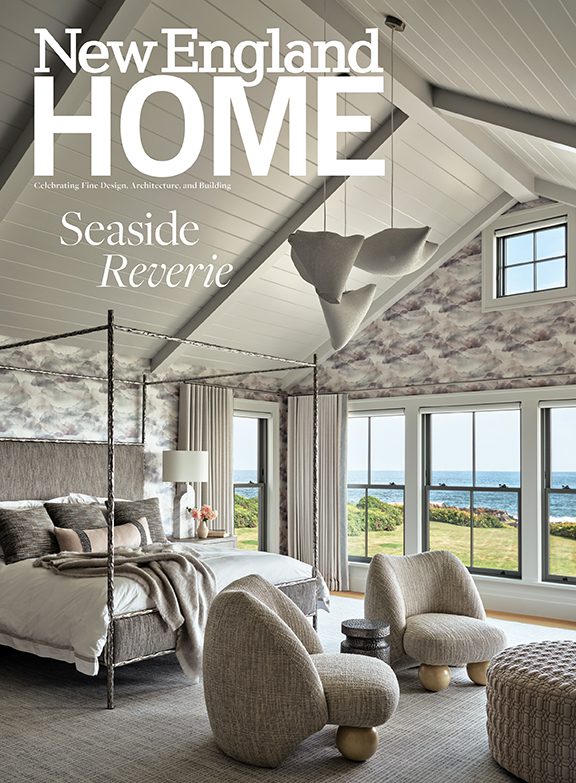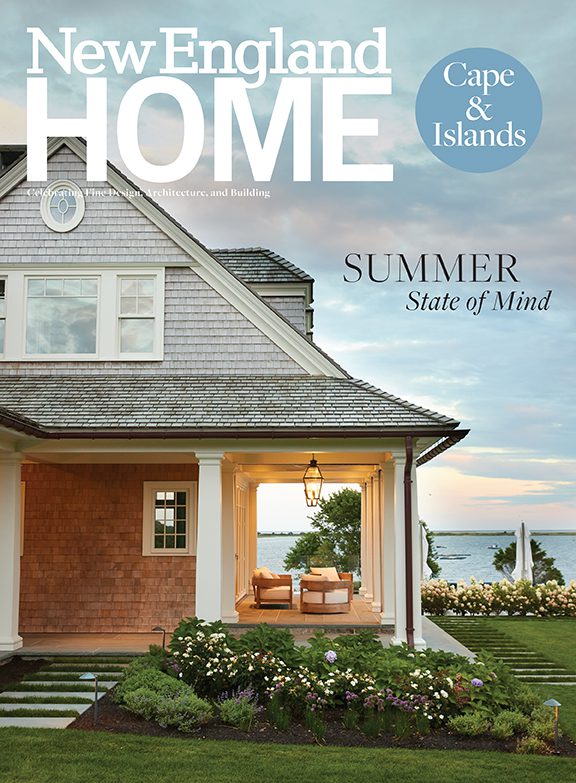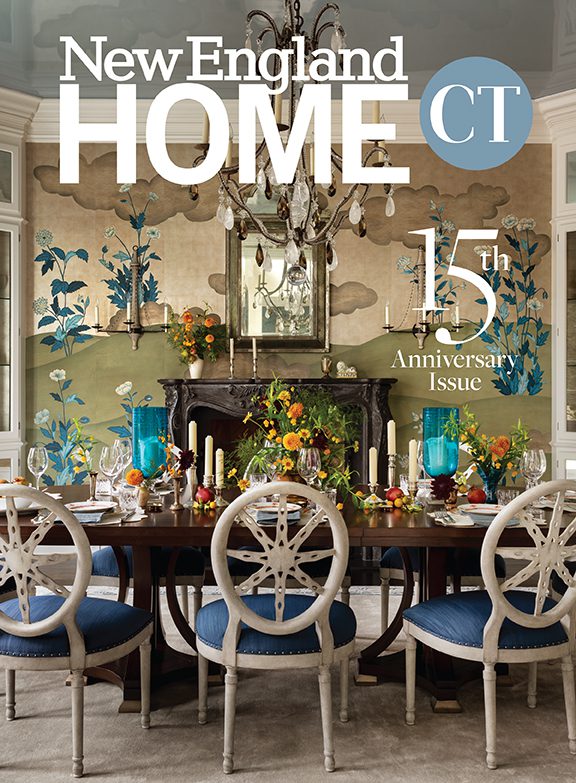Hardly Garden Variety
August 1, 2012
Text by Regina Cole Photography by Woodruff/Brown Architectural Photography
These homeowners had seven acres on which to grow things. But when four adjacent acres came onto the real estate market, the husband snapped them up. “He had two compelling motivations,” says Charles Hilton of Hilton-VanderHorn Architects in Greenwich. “He wanted more room to expand the garden, and he wanted to make sure that no monster spec houses were built there. The zoning allows for two-acre lots, so it was likely that there would soon be two McMansions in clear view.”
“In the nineteenth century, the whole area was a working farm,” explains landscape architect Charles Stick. “By the 1930s, the farm had already been subdivided into house lots. The whole idea was to bring back together what had been.”
Today a working farm once again stands on the eleven-acre estate, forming the core of a varied, beautiful landscape. Stick designed a master plan with the passionate gardener/homeowner that encompasses elements the original farmer surely would have envied: a large English greenhouse adjoins a generous, well-equipped potting shed, which, in turn, abuts the garage, guest quarters and home office. The compound, which used and expanded on existing farm buildings, forms a U around a paved courtyard. Picturesque with granite foundations and half timbering, the buildings and the garden wall at one corner form the boundary of one of Greenwich’s charming country roads.
Hilton was inspired by the little hamlet Marie Antoinette had build at Versailles, he says. “We translated it to Connecticut with granite instead of limestone, and slate on the roof instead of thatch. Though the timbers were mill-sawn, the workmen used old adzes to make them look hand-hewn. The aesthetic is very French.”
The backs of the greenhouse and adjoining outbuildings open to a stunning parterre garden, where neatly trimmed boxwood hedges enclose tidy geometric beds. Instead of the expected roses, however, these beds contain vegetables.
“I have always thought that gardens like this should be beautiful year round,” says Stick. “The idea behind the paterre vegetable garden is that it creates a pattern we see throughout the seasons. It is especially pronounced when covered with snow in the winter.”
Though inspired by a historic folly and designed for aristocratic good looks, this vegetable garden works: its bounty supports a cooperative of a dozen members who sign up for overflowing weekly bags of fresh organic produce throughout the growing season.
Neighbors eating from this land again: that is just one of the unexpected ways this landscape seems to slowly be turning full circle. Function and form follow each other architecturally, as well. Anchoring the end of the U-shaped string of structures that is closest to the stone property gates is a small, one-room stone cottage. Fronted by four rustic columns and turned to face the end of the driveway, the little building was originally the farm stand that sold fresh produce from these fields. The endearing stone building now houses the husband’s home office.
“We could not build bigger, and we had to remain with the original architecture,” Hilton says, referring to zoning ordinances written to prevent the demolition of historically notable buildings. “The buildings we renovated and augmented have come together to create an authenticity of place. Our goal was to preserve the property without overbuilding it.
The greenhouse across the courtyard, new and undeniably beautiful, is similarly hard working, Here the homeowners start seeds, grow tender crops, and overwinter dormant plants.
Stick connected with his clients via Isabelle Vanneck, principal of Davenport North, the Greenwich interior design firm. When she saw the scope of the homeowners’ ambition, she thought of Stick. “I knew his work,” she says. “I knew that he thinks in grand, encompassing ways.”
Vanneck, who has worked with the homeowners since their 1995 purchase
of the 1940s Georgian residence, created warm, comfortable interiors for the new guest apartment, home office and functional gardening rooms. “The minute he purchased the land, I began to talk with Chuck Hilton and with Bob Levine, the contractor,” she says. “I looked for nineteenth-century French country furniture. I knew it would be appropriate and in scale, and I know the homeowner likes it.”
In the fast-growing community that treasures local, fresh, organically raised vegetables, this garden is becoming a touchstone. Cooking classes and gardening workshops are in the offing, all tributes to the work of food pioneer Alice Waters. Her gospel of “slow food” is not only embodied here, the project was directly driven by her philosophy. Waters, who has visited the garden, is a dear friend of the lady of the house. Together with their food mentor, designer, architect and landscape architect, the homeowners have accomplished the seemingly impossible: a working farm that is productive while it is elegant, beautiful at all times of year. •
Share
![NEH-Logo_Black[1] NEH-Logo_Black[1]](https://b2915716.smushcdn.com/2915716/wp-content/uploads/2022/08/NEH-Logo_Black1-300x162.jpg?lossy=1&strip=1&webp=1)













You must be logged in to post a comment.